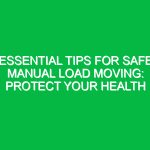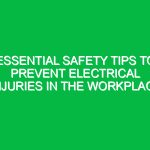Introduction
In the construction and Maintenance sectors, scaffolding serves as a crucial support system, allowing workers to reach elevated areas safely. However, the integrity of a scaffold directly impacts worker Safety, making inspections vital. Understanding who is authorized to inspect a scaffold is fundamental within the Health, Safety, and Environment (HSE) framework. Proper inspections not only mitigate risks associated with scaffold use but also ensure compliance with regulatory Standards. This article delves deeply into the qualifications, roles, and responsibilities of authorized scaffold inspectors, emphasizing their importance in promoting Workplace Safety and compliance.
Understanding Scaffold Inspections
Scaffold inspections are systematic checks performed to assess the Safety and functionality of scaffolding structures. They can range from pre-use inspections to periodic assessments during construction. The primary objective is to identify any defects or Hazards that could pose risks to workers. Inspections focus on several aspects, including:
- Structural integrity of the scaffold
- Proper assembly and configuration
- Compliance with safety Regulations
- Condition of components such as planks, ties, and brackets
Without competent inspections, the likelihood of accidents increases significantly. For instance, a scaffold collapse can lead to severe injuries or fatalities, underscoring the need for qualified personnel to carry out inspections.
Who is Authorized to Inspect a Scaffold?
The question of who is authorized to inspect a scaffold revolves around qualifications, experience, and adherence to safety standards. Generally, individuals authorized to conduct scaffold inspections fall into the following categories:
1. Competent Persons
According to the HSE guidelines, a “competent person” is defined as someone who possesses the necessary skills, knowledge, and experience to carry out specific tasks safely. For scaffold inspections, this typically means an individual who has undergone specialized Training in scaffold safety and inspection. Competent persons should understand:
- Scaffold design and construction principles
- Applicable safety regulations
- Common Hazards associated with scaffolding
Typically, these individuals include trained scaffolders, safety officers, or professionals with extensive experience in scaffold erection and disassembly.
2. Scaffold Inspectors
While competent persons can inspect scaffolds, dedicated scaffold inspectors are often employed for more comprehensive assessments. These inspectors usually have formal qualifications such as:
- National or international scaffold inspection certifications
- Construction safety training
- Experience in high-risk environments
A scaffold inspector’s role involves conducting thorough inspections, documenting findings, and ensuring that any issues are addressed promptly. Their expertise is vital in environments where scaffolding is frequently used, such as construction sites, maintenance facilities, and industrial plants.
3. Supervisors and Site Managers
On many construction sites, supervisors and site managers are responsible for overseeing scaffold safety. While they may not conduct detailed inspections themselves, they must ensure that qualified personnel perform these tasks. They should also be familiar with scaffold safety standards and the signs of potential hazards. Their oversight role is crucial, as they coordinate between different teams and ensure compliance with safety protocols.
4. Health and Safety Officers
Health and safety officers play an essential role in ensuring that all safety regulations are adhered to, including those related to scaffolding. While their primary function may not be direct scaffold inspections, they are responsible for implementing safety policies and monitoring compliance. They often liaise with scaffold inspectors to ensure that inspection findings are addressed and that the work environment remains safe for all employees.
The Importance of Training and Certification
To ensure a scaffold inspector is genuinely competent, comprehensive training and certification programs are essential. Various organizations provide scaffold inspection courses, which typically cover:
- Types of scaffolding and their applications
- Legal requirements and standards (such as OSHA regulations in the U.S.)
- Risk assessment and hazard identification techniques
- Inspection Procedures and documentation
For example, in the UK, the National Access and Scaffolding Confederation (NASC) offers scaffolding training courses that encompass these critical aspects.
Real-life experience is invaluable. A scaffold inspector with years of hands-on experience is likely to identify issues that a new inspector might overlook. This blend of formal education and practical experience is essential for anyone tasked with inspecting scaffolding.
Regulations and Standards Governing Scaffold Inspections
Compliance with regulations is non-negotiable when it comes to scaffold inspections. Various standards exist globally to ensure the safety and integrity of scaffolding.
1. osha Regulations (U.S.)
In the United States, the Occupational Safety and Health Administration (OSHA) outlines stringent regulations for scaffolding in construction. OSHA requires that scaffolds be inspected by a qualified person before their initial use and after any alterations. This ensures that scaffolding remains safe throughout its use. Failure to comply with these regulations can lead to severe penalties and increased risks for workers.
2. HSE Guidelines (UK)
The Health and Safety Executive (HSE) in the UK provides comprehensive guidelines regarding scaffold safety. The HSE emphasizes that scaffolding should only be erected, altered, or dismantled by trained personnel. Regular inspections are mandated, and records must be maintained to demonstrate compliance. These guidelines are designed to mitigate risks associated with scaffolding and ensure worker safety.
Best Practices for Scaffold Inspection
To maintain a high standard of safety, scaffold inspectors should follow Best Practices, including:
- Regular Training: Continuous education helps inspectors stay updated on new regulations, technologies, and safety practices.
- Thorough Documentation: A detailed inspection report should be prepared after every inspection, noting any issues and corrective actions taken.
- Effective Communication: Inspectors should communicate findings to all stakeholders, ensuring everyone understands potential risks and Safety Measures.
- Using Checklists: A standardized inspection checklist can help ensure comprehensive assessments and reduce the chance of overlooking critical safety issues.
These practices not only enhance safety but also foster a culture of accountability and continuous improvement within organizations.
Potential Hazards and Risks
Understanding the potential hazards associated with scaffolding is paramount for inspectors. Some common risks include:
- Structural Failures: Improperly erected scaffolds can collapse, leading to severe injuries.
- Falls: Workers may fall if Safety Measures, such as guardrails and Personal Protective Equipment, are not in place.
- Falling Objects: Tools and materials can fall from scaffolds, posing a risk to workers below.
By recognizing these hazards, inspectors can implement preventative measures and ensure that scaffolding is erected and maintained safely.
Case Study: A Real-World Example
In 2019, a construction site in London faced a tragic incident when improperly inspected scaffolding collapsed, resulting in multiple injuries. Investigations revealed that the scaffold had not been inspected by a qualified person after a significant alteration. This incident not only highlighted the importance of regular inspections but also the need for rigorous adherence to regulatory standards. In response, the construction company reinforced its training programs and established stricter inspection protocols, ultimately reducing the risk of similar incidents in the future.
Conclusion
Understanding who is authorized to inspect a scaffold is a critical component of ensuring Workplace Safety within the construction and maintenance sectors. Competent persons, scaffold inspectors, supervisors, and health and safety officers all play essential roles in the inspection process. The importance of proper training, adherence to regulations, and implementation of Best Practices cannot be overstated.
As we strive for safer working environments, ongoing education and commitment to safety standards will enhance the effectiveness of scaffold inspections. In doing so, we not only protect our workforce but also cultivate a culture of safety and responsibility that Benefits everyone involved in the construction industry.


